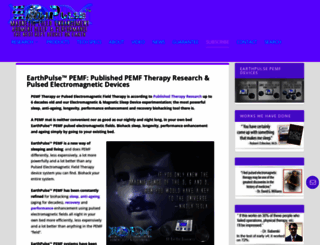EarthPulse™ PEMF Therapy Research & Pulsed Electromagnetic Devices
Page Load Speed
16.1 sec in total
First Response
6.5 sec
Resources Loaded
9.1 sec
Page Rendered
434 ms

About Website
Visit earthpulse.net now to see the best up-to-date Earth Pulse content for United States and also check out these interesting facts you probably never knew about earthpulse.net
EarthPulse PEMF device, reviews for pulsed electromagnetic field as a powerful recovery tool and the benefits of pemf therapy systems.
Visit earthpulse.netKey Findings
We analyzed Earthpulse.net page load time and found that the first response time was 6.5 sec and then it took 9.5 sec to load all DOM resources and completely render a web page. This is a poor result, as 85% of websites can load faster.